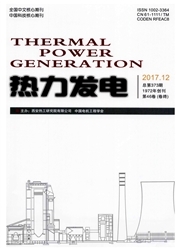

 中文摘要:
中文摘要:
火电机组在实际运行过程中,由于主蒸汽参数不可避免地偏离设计值,使得机组功率和各项经济指标发生变化。对此,对等效焓降法和偏微分法2种计算模型进行了分析和比较,指出了2种计算模型各自的优缺点和适用条件;并以N600-16.7/537/537-I型汽轮机运行数据为例,对模型进行了验证。结果表明:2种计算模型均具有计算结果较准确、便于使用、通用性强等特点,适宜于工程应用;由于偏微分法对前提做了一定的假设,使得其计算精度较等效焓降法低。
 英文摘要:
英文摘要:
Main steam parameters will deviate from design values inevitably during actual operation of steam turbines,causing changes in unit power and economic indexes. Thus,the equivalent enthalpy drop method and partial differential method were applied to solve this problem. The advantages,disadvantages and application conditions of each method were compared. Moreover,by taking operation data of an N600-16. 7 /537 /537-I type steam turbine as the example,models from the above two methods were validated. The results show that,both the models have accurate results,and are convenient,universal,suitable for practical engineering application. However,as the partial differential method makes certain assumptions on the premise,its calculation accuracy is not that high as the equivalent enthalpy drop method.
 同期刊论文项目
同期刊论文项目
 同项目期刊论文
同项目期刊论文
 期刊信息
期刊信息
